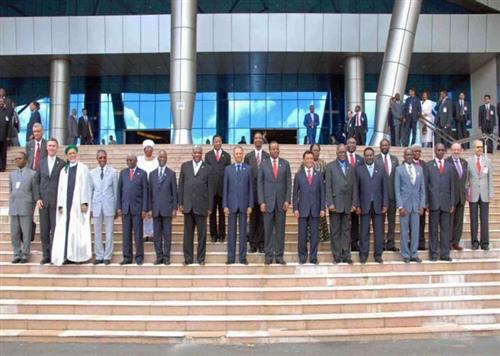Within SADC policies and instruments, water is recognised as an important contributor to the SADC goal of “the attainment of an integrated regional economy on the basis of balance, equity and mutual benefit for all Member States” (SADC 2007). The SADC water sector is guided by a number of policy instruments and strategies, described in more detail below.
The SADC Treaty (1993) is a legal instrument that allows member states to conclude a series of protocols that elaborate on the objectives, scope and institutional mechanisms for cooperation and integration in the region, with the aim of ensuring: economic well-being; improvement in the standards of living and quality of life; freedom and social justice; and peace and security for its people (Kranz et al. 2005).
The plan is intended to guide the SADC Regional Indicative Strategic Development Plan (RISDP) is a 15-year regional integration development plan, setting the priorities, policies and strategies for achieving the long-term goals of SADC. Member States, SADC Institutions, regional stakeholders, and International Cooperating Partners (ICPs) in the process of deepening integration to turn the Communities’ Vision into reality. Main interventions of the plan (both sectoral and cross-sectoral) are in:
-
Poverty eradication
-
Regional development and integration
-
Regionally balanced and equitable development
-
Integration into the continental and global economies
-
Sustainable development
-
Gender equality
The Revised Protocol on Shared Watercourses in SADC (enacted in 2004) is a legal instrument, and one of the protocols developed under the SADC Treaty. The Revised Protocol directly relates to the regions’ water sector. It calls upon member states to:
-
Develop close co-operation for judicious and coordinated utilisation of the resources of shared watercourses
-
Co-ordinate environmentally sound development of shared watercourses in order to support socio-economic development
-
Exchange information and consult with each other (SADC 2005a)
The Southern Africa (SADC) Vision for Water, Life and Environment: “Equitable and sustainable utilisation of water for social and environmental justice, regional integration and economic benefit for present and future generations (SADC 2007)” was adopted in 2000. The vision together with its sub-visions formed the basis for the long-term regional water policy and strategy.
The SADC Regional Water Policy and Strategy (RWPS), completed in 2006, provides the policy framework and strategy for sustainable, integrated and coordinated development, utilisation, protection and control of national and transboundary water resources in the SADC region (SADC 2006a).
The linkages between SADC goals of integration and poverty reduction and the Regional Water Policy are outlined in the figure above.
The SADC Regional Strategic Action Plan (RSAP) for Integrated Water Resources Development and Management is the SADC Water Sector’s implementation plan; it gives practical effect to the implementation of the SADC Protocol on Shared Watercourse. This is discussed in more detail in the section specifically related to the Action Plan.

SADC Heads of State and Ministers of Water at the SADC Consultative Conference, Mauritius, April 2008.
Source:SADC Corporate Communications and Logistics 2008
( click to enlarge )
